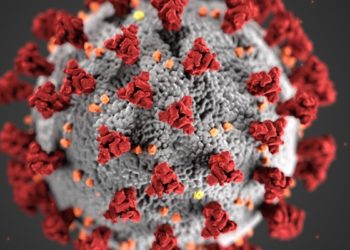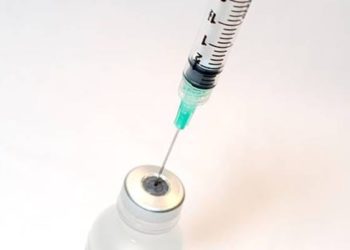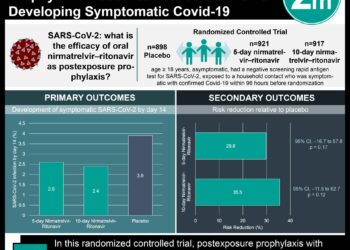Southern and Northern Africa continue to be disproportionately affected during the second wave of COVID-19
1. Analysis of the two distinct waves of the COVID-19 pandemic in Africa showed a more severe second wave with less stringent public health measures in place.
2. The pandemic had a diverse effect on the different regions of Africa, such as an increased prevalence of cases in the Southern regions and increased case fatality ratios in the Northern regions.
Evidence Rating Level: 2 (Good)
Study Rundown: Since the first case was reported in Egypt on February 14, 2020, Africa has been hit by two distinct waves of the COVID-19 pandemic. Using epidemiological data from the Africa CDC, this comprehensive cross-sectional study investigated the trends in cases, deaths, recoveries, and testing seen across the continent’s 55 member states. The pandemic had a diverse effect across Africa’s regions, with Southern Africa reporting a much higher cumulative incidence (640.5 per 100 000 population) compared to the rest of the continent. In contrast, most Northern countries are reporting a test per case ratio less than the WHO recommendation of 10. In addition to disease spread, the study analyzed public health and social measures (PHSMs) recorded in official government reports and verified data sources. Most countries implemented stringent measures before their first COVID-19 case was reported. At the start of the first wave in April 2020, all 55 member states had instituted lockdown measures. Despite a more aggressive second wave, less PHSMs were instituted than had been in the first wave in 17 countries. It is unclear why the second wave has been more severe, but it may be a combination of many factors, such as the described loosened restrictions, more infective variants, and low lockdown adherence due to pandemic fatigue or economic strain.
Limitations of this study include limited testing capacity, which could lower reported cases and inflate case death ratios. The types of tests used, and the frequency of testing varied for each country, could have also affected results. Nonetheless, comprehensive data studies such as this are critical for informing future response measures, such as vaccine distribution.
Click to read the study in The Lancet
Click to read an accompanying editorial in The Lancet
Relevant Reading: COVID-19 in Africa: the spread and response
In-Depth [cross-sectional study]: This observational study analyzed Africa CDC’s epidemiological data from Feb 14 until Dec 31, 2020. During this period, 2 763 421 cases of COVID-19 were reported, with 43% of these cases being from Southern Africa. Of the 55 African Union Member States, nine accounted for 82.6% of the cases. Of the reported cases, 2 763 421 (80.3%) are reported as recovered from COVID-19. 65 602 deaths were reported, with most (77%) coming from South Africa, Egypt, Morocco, Tunisia, and Algeria. 17 countries have Case Fatality Rates (CFRs) higher than the global CFR (2.2%), with Sudan being the highest at a CFR of 6.1%. Data was also reported on laboratory testing, notably a test per case ratio less than 10 in five of seven Northern countries.
The study also analyzed COVID-19 response, also referred to as public health and social measures (PHSMs), by monitoring Partnership for Evidence-Based Response to COVID-19 dashboard and Oxford COVID-19 Government Response Tracker. 72% of African countries implemented stringent PHSM an average of 15 days (range 1-68) before their first COVID-19 case was reported. At the start of the first wave in April 2020, all 55 member states had instituted lockdown measures, such as travel controls (100%), school closures (98%), gathering restrictions (98%), cancelled public events (98%). Less PHSMs were seen in 17 countries in the second wave compared to the first. The second wave hit Africa much more aggressively, with a weekly incidence 30% greater than the first wave (peak weekly incidence 18 273 cases in the first wave vs. 23 790 cases as of Dec 31, 2020).
Image: PD
©2020 2 Minute Medicine, Inc. All rights reserved. No works may be reproduced without expressed written consent from 2 Minute Medicine, Inc. Inquire about licensing here. No article should be construed as medical advice and is not intended as such by the authors or by 2 Minute Medicine, Inc.







